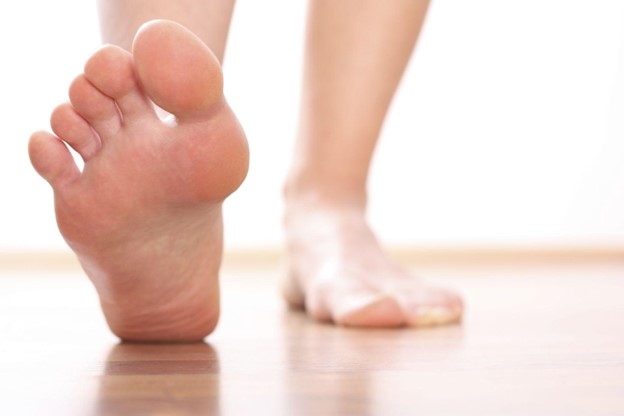Category: Foot Care
Understanding Common Foot Problems and How a Podiatrist in Singapore Can Help

Understanding Foot Ailments: Your Guide to Expert Podiatry Care in Singapore
Our feet bear the brunt of our daily activities, yet they are often the most neglected parts of our body. In Singapore, where people lead an active lifestyle and spend considerable time walking or standing, foot problems can become a common issue.
From minor discomforts to more serious conditions, foot problems can significantly impact one’s quality of life. This article will delve into some common foot problems and explore how a podiatrist in Singapore can provide the necessary care and treatment.
1. Plantar Fasciitis: A Common Cause of Heel Pain
What is Plantar Fasciitis
Heel pain is often linked to a condition known as plantar fasciitis. This happens when the thick band of tissue under the foot, known as the plantar fascia, becomes irritated or swollen.
The pain is usually sharp and intense, particularly noticeable when taking the first few steps after getting out of bed. Factors like excessive strain on the feet, unsuitable shoes, or spending long hours standing can trigger this condition.
How a Podiatrist Can Help
A podiatrist can assess the severity of plantar fasciitis through physical examination and imaging tests if necessary. Treatment options may include custom orthotics to provide arch support, stretching exercises, shockwave therapy, or corticosteroid injections. In more severe cases, surgical intervention might be considered. Early diagnosis and intervention are crucial in managing pain and preventing the condition from worsening.
2. Bunions: A Deformity That Requires Attention
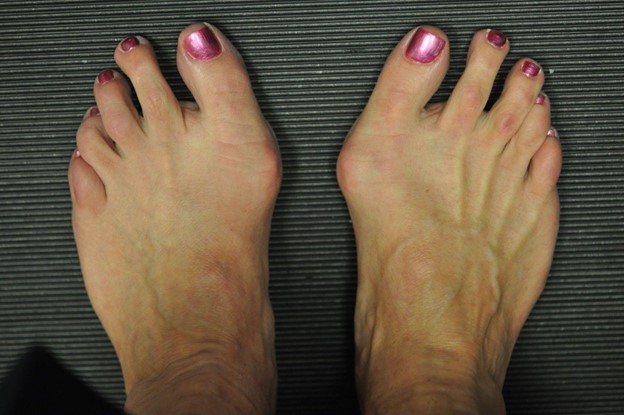
Understanding Bunions
Bunions are noticeable bumps that develop on the joint at the base of the big toe. They occur when the bones in the front part of the foot become misaligned, causing the big toe to lean towards the second toe.
This shift forces the joint to stick outwards. Wearing shoes that are too tight or narrow often worsens the discomfort associated with bunions, making daily activities painful.
How a Podiatrist Can Help
A podiatrist will evaluate the bunion’s severity and suggest conservative treatments, such as wearing wider shoes, using protective padding, or taking anti-inflammatory medications. In cases where conservative treatments do not provide relief, surgical correction, known as a bunionectomy, may be recommended. A podiatrist will guide you through the best treatment plan based on the condition’s progression and your lifestyle.
3. Flat Feet: Beyond Just an Aesthetic Concern
Understanding Flat Feet
When someone has flat feet, the arches of their feet have collapsed, causing the whole bottom of the foot to make contact with the ground. Some people with flat feet experience no symptoms, while others might have pain in the arch or heel area.
This condition can lead to excessive inward rolling of the foot, known as overpronation, which can, in turn, cause discomfort in the knees, hips, and lower back.
How a Podiatrist Can Help
A podiatrist can perform a comprehensive assessment to determine the extent of flat feet and associated conditions. Treatment may involve recommending custom orthotics to support the arches, physical therapy exercises to strengthen the foot muscles, and lifestyle modifications. In severe cases, surgical intervention might be necessary to correct the deformity.
4. Ingrown Toenails: A Painful, Yet Preventable Issue
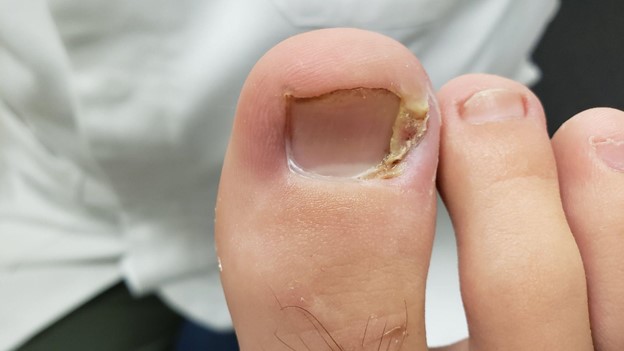
Understanding Ingrown Toenails
An ingrown toenail develops when the corner or side of a toenail starts to grow into the skin nearby, leading to discomfort, swelling, redness, and sometimes infection. The big toe is most frequently affected by this issue, which can be brought on by cutting nails too short, wearing shoes that squeeze the toes, or injuring the toe.
How a Podiatrist Can Help
For mild cases, a podiatrist may suggest proper nail care techniques, wearing comfortable shoes, and soaking the foot in warm water. In more severe cases, where the infection is present or pain is persistent, a minor surgical procedure may be required to remove part of the nail or the entire nail. A podiatrist will provide ongoing care and advice on preventing the recurrence of ingrown toenails.
5. Diabetic Foot Problems: The Need for Regular Monitoring
Understanding Diabetic Foot Problems
People with diabetes are at a higher risk of developing foot problems due to poor blood circulation and nerve damage (neuropathy). Common issues include foot ulcers, infections, and, in severe cases, gangrene. If not addressed promptly, these complications can lead to amputation.
How a Podiatrist Can Help
Regular foot check-ups with a podiatrist are crucial for individuals with diabetes. A podiatrist will perform a thorough examination, assess the risk of foot ulcers, provide education on proper foot care, and recommend suitable footwear.
For existing foot ulcers or infections, a podiatrist can provide wound care, prescribe antibiotics, and perform necessary surgical procedures. Preventative care is essential to avoid severe complications.
6. Athlete’s Foot: A Common Fungal Infection
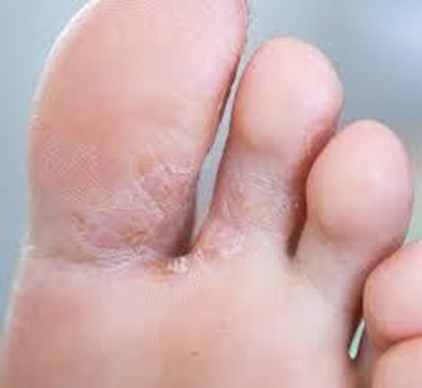
Understanding Athlete’s Foot
Athlete’s foot is a fungal infection that typically affects the skin between the toes. It is characterised by itching, burning, peeling, and sometimes a foul odour. The condition is highly contagious and can spread through contact with contaminated surfaces or by sharing personal items like shoes and socks.
How a Podiatrist Can Help
A podiatrist can diagnose athlete’s foot and recommend topical or oral antifungal medications based on the infection’s severity. They can also provide advice on maintaining good foot hygiene, keeping feet dry, and choosing appropriate footwear to prevent recurrence.
7. Corns and Calluses: Managing Thickened Skin
Understanding Corns and Calluses
Corns and calluses are thickened layers of skin that develop due to friction or pressure. Corns are smaller and develop on the top and sides of toes, while calluses are larger and usually form on the soles. Both can cause discomfort and pain if left untreated.
How a Podiatrist Can Help
A podiatrist can safely remove corns and calluses and provide customised orthotics or padding to redistribute pressure. They may also recommend changes in footwear and advise on skincare routines to prevent further development. In severe cases, additional treatments such as cryotherapy or minor surgery may be needed.
8. Achilles Tendonitis: Understanding Overuse Injuries
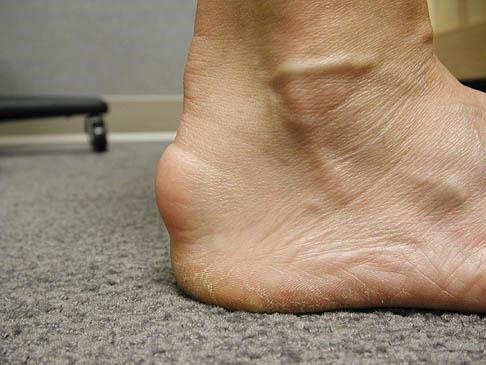
Understanding Achilles Tendonitis
Achilles tendonitis is an overuse injury that causes pain and inflammation in the Achilles tendon, which connects the calf muscles to the heel bone. It is common among athletes and those who engage in high-impact activities like running and jumping.
How a Podiatrist Can Help
A podiatrist will evaluate the condition and suggest treatments such as rest, ice, compression, elevation (RICE), physical therapy, and orthotic devices. For severe cases, advanced treatments like shockwave therapy, platelet-rich plasma (PRP) injections, or surgery might be considered. Preventative measures, including proper warm-up techniques and stretching exercises, will also be part of the management plan.
9. Morton’s Neuroma: Addressing Nerve Pain in the Foot
Understanding Morton’s Neuroma
Morton’s neuroma is a painful condition that affects the ball of the foot, most commonly between the third and fourth toes. It occurs when the tissue around the nerves leading to the toes thickens, causing a sharp, burning pain, numbness, or a feeling of a pebble in the shoe.
How a Podiatrist Can Help
Treatment options include using custom orthotics, modifying footwear, administering corticosteroid injections, and suggesting physical therapy. In cases where conservative measures do not provide relief, surgical removal of the affected nerve may be necessary. A podiatrist will provide a tailored treatment plan based on the condition’s severity and the patient’s lifestyle.
10. Gout: A Form of Arthritis Affecting the Feet

Understanding Gout
Gout is a type of arthritis caused by the accumulation of uric acid crystals in the joints, often affecting the big toe. It can cause sudden and severe pain, redness, swelling, and stiffness. Gout attacks can be triggered by certain foods, alcohol, and dehydration.
How a Podiatrist Can Help
A podiatrist can provide a comprehensive management plan for gout, including medication to reduce uric acid levels, anti-inflammatory drugs to manage pain, dietary advice, and lifestyle modifications. Regular monitoring and early intervention are crucial in preventing recurrent gout attacks and joint damage.
Conclusion: The Importance of Professional Foot Care
Foot problems can range from minor annoyances to serious conditions that impact overall health and mobility. In Singapore, where daily activities demand a lot from our feet, seeking professional care from a podiatrist is essential.
A podiatrist treats existing foot problems and provides valuable guidance on prevention, ensuring long-term foot health. If you are experiencing any foot pain or discomfort, do not hesitate to consult a podiatrist. Early intervention can make all the difference in maintaining a healthy and active lifestyle.
By understanding common foot problems and the role of a podiatrist in managing them, you can take proactive steps to care for your feet and enjoy a better quality of life.
Foot Health 101: Everything You Need to Know from Singapore’s Leading Podiatrists
Essential Foot Health Tips from Singapore’s Top Podiatrists
Foot health is often overlooked, yet it plays a crucial role in our overall well-being. Our feet bear the weight of our entire body and are involved in nearly every movement we make.
In Singapore, where the climate and lifestyle can sometimes lead to specific foot-related issues, understanding foot health is even more important. This comprehensive guide from Singapore’s leading podiatrists will cover everything you need to know about maintaining healthy feet, common foot problems, treatments, and preventive measures.
The Importance of Foot Health
Our feet are intricate structures composed of 26 bones, 33 joints, and over 100 muscles, tendons, and ligaments. These elements work together to provide stability, movement, and support. Good foot health is essential because:
- Daily Mobility: Healthy feet allow us to perform daily activities comfortably, such as walking, running, and standing.
- Posture and Balance: Feet serves as the foundation of our body. Poor foot health can lead to posture issues, back pain, and balance problems.
- Quality of Life: Chronic foot pain or conditions can significantly affect one’s quality of life, limiting physical activities and impacting mental health.
Common Foot Problems in Singapore
Singapore’s warm and humid climate, combined with lifestyle factors, can contribute to several common foot problems. Here’s a look at some issues frequently treated by podiatrists in the region:
1. Plantar Fasciitis
Plantar fasciitis is a condition marked by inflammation of the band of tissue running along the bottom of the foot from the heel to the toes. This problem is frequently due to repetitive strain, wearing shoes that don’t offer adequate support, or standing for prolonged periods. It manifests as sharp pain, especially when one gets up in the morning.
Symptoms: Sharp pain in the heel, especially in the morning or after long periods of rest.
Treatment: Rest, ice therapy, stretching exercises, orthotic inserts, and in severe cases, corticosteroid injections or surgery.
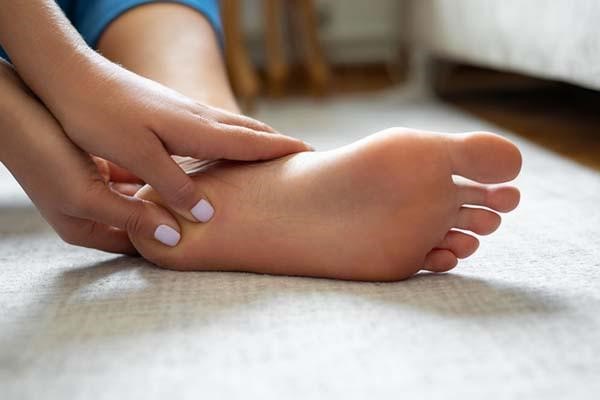
2. Bunions
Bunions are hard bumps that appear at the base of the big toe. They occur when the bones at the front of the foot move out of alignment, causing the big toe to lean towards the second toe.
Symptoms: Pain, swelling, redness around the joint, and difficulty wearing shoes.
Treatment: Proper footwear, orthotic devices, padding, medication, and in some cases, surgical correction.
3. Athlete’s Foot
A common fungal infection, Athlete’s Foot thrives in warm, moist environments and is highly contagious. It can spread through contact with contaminated surfaces, such as gym floors or communal showers.
Symptoms: Itching, burning sensation, peeling skin, and redness.
Treatment: Antifungal creams, powders, proper foot hygiene, and keeping feet dry.
4. Ingrown Toenails
Ingrown toenails develop when a toenail’s edge grows into the skin around it, causing discomfort, redness, and swelling. This condition can result from incorrect nail trimming, tight shoes, or injuries to the foot.
Symptoms: Pain, redness, swelling, and sometimes infection.
Treatment: Proper nail trimming, soaking the foot in warm water, wearing comfortable shoes, and, if infected, antibiotics or minor surgery.
5. Corns and Calluses
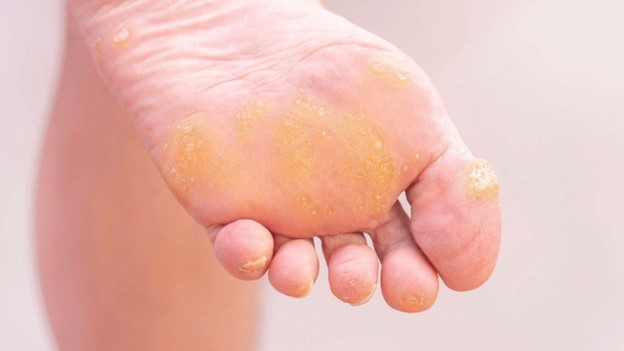
Corns and calluses are thickened layers of skin that develop due to friction or pressure, often from wearing ill-fitting shoes or prolonged walking.
Symptoms: Hardened, thick patches of skin that may be painful.
Treatment: Wearing well-fitted shoes, using padding, medicated creams, and, in severe cases, removal by a podiatrist.
Prevention is Key: Tips for Healthy Feet
Preventing foot problems before they develop is the best approach to maintaining optimal foot health. Here are some expert tips from Singapore’s leading podiatrists:
- Wear Proper Footwear: Choose shoes that provide adequate support, cushioning, and fit properly. Avoid high heels and pointed-toe shoes that can cause deformities and pain over time.
- Practice Good Hygiene: Wash feet daily with soap and water, dry them thoroughly, especially between the toes, and change socks regularly. This helps prevent fungal infections like Athlete’s Foot.
- Trim Nails Correctly: Trim toenails straight across and avoid cutting them too short. This prevents ingrown toenails and other nail problems.
- Moisturize Regularly: Dry, cracked feet can lead to infections. Apply a good-quality moisturizer to keep the skin soft and supple, but avoid the spaces between the toes to prevent fungal growth.
- Exercise Regularly: Engage in activities that promote foot strength and flexibility, such as walking, swimming, and specific foot exercises.
- Inspect Your Feet Daily: Look for signs of blisters, cuts, swelling, or discoloration. Early detection can prevent minor issues from developing into more serious conditions.
When to See a Podiatrist
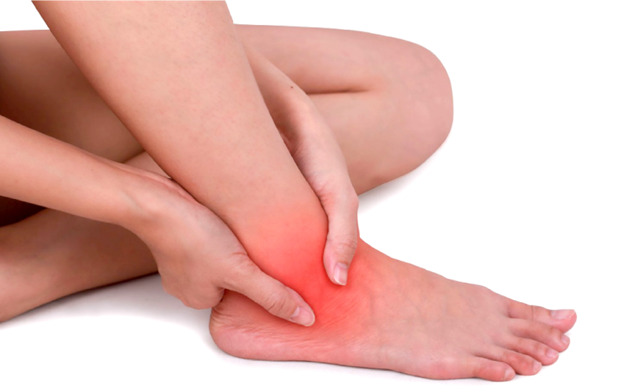
Many people tend to ignore foot pain, assuming it will go away on its own. However, untreated foot problems can worsen over time, leading to more severe conditions and even affecting your overall health. It’s essential to consult a podiatrist if you experience:
- Persistent pain or swelling in the foot or ankle.
- Changes in the appearance of your nails or skin.
- Difficulty walking or performing daily activities due to foot pain.
- Recurring infections or injuries.
Treatments Offered by Singapore’s Leading Podiatrists
Podiatrists in Singapore are highly skilled in diagnosing and treating foot conditions. Here are some treatments and interventions they provide:
- Orthotic Therapy: Custom-made orthotics are shoe inserts that provide support and correct foot alignment, helping alleviate pain and prevent future issues.
- Foot and Ankle Surgery: For severe cases, surgical intervention may be necessary to correct deformities, remove bunions or ingrown toenails, or repair fractures.
- Physical Therapy: A combination of exercises and stretches to strengthen the feet, improve flexibility, and reduce pain.
- Wound Care: Diabetic patients and those with poor circulation are prone to foot ulcers. Podiatrists provide specialized wound care to prevent complications and promote healing.
- Shockwave Therapy: A non-invasive treatment that uses sound waves to stimulate healing in tissues, commonly used for plantar fasciitis and other chronic foot conditions.
- Laser Therapy for Fungal Nails: Advanced laser treatment is available for stubborn fungal nail infections, offering a quicker and more effective solution than traditional topical treatments.
Foot Health and Specific Populations
Foot health considerations can vary among different population groups. Here’s what to keep in mind:
- Diabetics: Individuals with diabetes are at a higher risk of foot problems due to poor circulation and neuropathy. Regular foot check-ups, proper footwear, and maintaining blood sugar levels are crucial.
- Children: Foot problems in children, such as flat feet or toe walking, should be monitored closely. Early intervention can prevent future issues.
- Elderly: Age-related changes can affect foot health, such as thinning skin, reduced circulation, and arthritis. Regular podiatric care can help manage these conditions.
Conclusion
Foot health is fundamental to our overall well-being. By taking preventive measures, wearing proper footwear, maintaining good hygiene, and seeking professional care when necessary, we can ensure our feet remain healthy and pain-free.
Singapore’s leading podiatrists are equipped with the expertise and technology to treat various foot conditions, providing personalized care tailored to individual needs. Remember, healthy feet are the foundation of a healthy life—don’t neglect them!
Choosing the Best Podiatrist in Singapore: A Guide to Optimal Foot Health

Our feet are the foundation of our body, supporting us in every step we take. Despite their vital role, they are often neglected in our health routine. In Singapore, where active lifestyles and busy work schedules are the norm, foot health is critical.
A good podiatrist can make all the difference in maintaining or restoring your foot health, but choosing the right one requires careful consideration. In this article, we will guide you through the essential factors to consider when selecting a podiatrist in Singapore to ensure your feet receive the care they deserve.
Understanding the Role of a Podiatrist
A podiatrist doctor is a medical professional specializing in diagnosing, treating, and preventing foot and lower limb conditions. From common problems like bunions, ingrown toenails, and flat feet to more severe issues such as diabetic foot ulcers and sports injuries, podiatrists provide a wide range of treatments. They also offer valuable advice on footwear, orthotics, and exercises to maintain optimal foot health.
Podiatrists are trained to look beyond the obvious symptoms and identify underlying issues that may be affecting your feet. For instance, recurrent ankle sprains might indicate a deeper problem with foot alignment or gait. A competent podiatrist uses their expertise to recommend treatments that address the root cause rather than just the symptoms.
Why Foot Health is Crucial in Singapore
Singapore’s climate, lifestyle, and urban environment can contribute to various foot problems. High humidity levels can lead to fungal infections, while long hours of standing or walking on hard surfaces can cause conditions like plantar fasciitis or heel spurs. Additionally, an increasingly active population participating in sports like running, football, and hiking often encounters sports-related foot injuries.
For those with chronic conditions like diabetes, foot care becomes even more critical. Diabetic patients are prone to nerve damage and poor blood circulation, increasing the risk of foot ulcers and infections. Regular check-ups with a podiatrist can prevent complications and provide timely intervention.
Factors to Consider When Choosing a Podiatrist in Singapore
Given the importance of foot health, selecting the right podiatrist is essential. Here are some key factors to consider:
Qualifications and Experience
Not all podiatrists are created equal. It’s crucial to choose a podiatrist with the right qualifications, such as a degree in podiatric medicine from a reputable institution. Experience also plays a significant role. An experienced podiatrist is more likely to have encountered a wide range of foot problems and can provide more accurate diagnoses and effective treatments.
In Singapore, the Ministry of Health requires podiatrists to be registered with the Allied Health Professions Council (AHPC). Checking for AHPC registration ensures that the podiatrist meets the required standards of professional practice and ethics.
Specialisation Areas

Podiatry covers a broad spectrum of specialisations, from sports medicine and diabetic foot care to paediatrics and biomechanics. Depending on your specific needs, you might benefit more from a podiatrist who specialises in a particular area.
For example, if you are an athlete dealing with a recurring sports injury, a podiatrist with expertise in sports podiatry will be more suitable. Likewise, individuals with diabetes should seek out podiatrists who focus on diabetic foot care.
Range of Services Offered
A comprehensive podiatry clinic should offer a wide range of services, including but not limited to:
- General foot care: Treatment for common foot problems like corns, calluses, and ingrown toenails.
- Orthotics: Custom-made shoe inserts to correct foot posture and alleviate pain.
- Biomechanical assessment: Evaluation of gait and posture to identify abnormalities.
- Diabetic foot care: Regular screenings and preventive care to avoid complications.
- Minor surgery: Procedures for ingrown toenails, cyst removal, etc.
It’s advantageous to choose a clinic that can provide all the necessary services under one roof, ensuring a more coordinated and holistic approach to foot care.
Technology and Treatment Methods
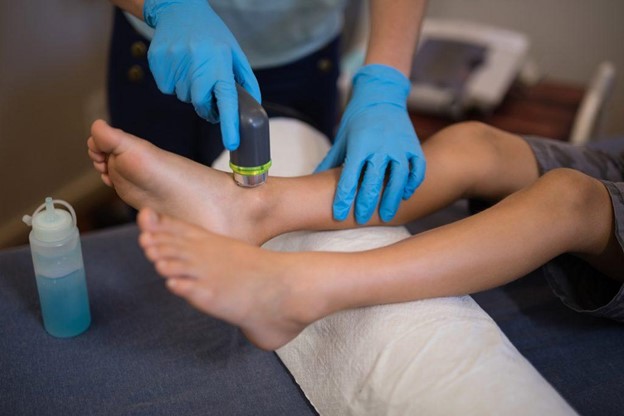
The field of podiatry is continually evolving with advancements in technology and treatment methods. Modern podiatric clinics should be equipped with the latest diagnostic tools, such as digital gait analysis, ultrasound imaging, and 3D foot scanners.
These technologies enable more accurate assessments and targeted treatments. Moreover, treatments like shockwave therapy, laser therapy, and minimally invasive procedures are becoming more popular for their effectiveness and shorter recovery times.
When selecting a podiatrist, inquire about the technologies and treatment methods they use. A clinic that stays up-to-date with the latest advancements in podiatry is likely to provide better outcomes.
Patient-Centric Approach
A good podiatrist should take a patient-centric approach, which involves active listening, clear communication, and a focus on patient education. They should take the time to understand your concerns, explain the diagnosis in understandable terms, and involve you in the decision-making process for your treatment plan. A patient-centric approach ensures that you feel comfortable and confident in the care you receive.
Reputation and Reviews
In today’s digital age, reviews and testimonials play a significant role in the decision-making process. Checking online reviews on platforms like Google, HealthHub, and clinic websites can provide valuable insights into the experiences of other patients. Look for consistent positive feedback, especially regarding the podiatrist’s expertise, professionalism, and patient care.
However, be cautious of overly negative or overly positive reviews. It’s essential to read between the lines and consider the overall tone and balance of the reviews.
Location and Accessibility
The location of the podiatrist’s clinic is another practical consideration. Foot problems often require multiple visits, so it’s essential to choose a clinic that is conveniently located and easily accessible by public transport or car. Consider factors such as clinic hours, parking availability, and proximity to your home or workplace.
Some clinics also offer teleconsultations, which can be a convenient option for follow-up appointments or minor consultations.
Cost and Insurance Coverage
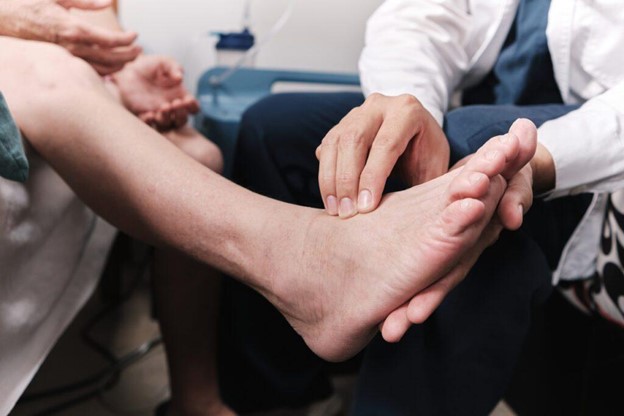
Podiatry services can vary in cost depending on the complexity of the condition and the type of treatment required. While cost should not be the sole deciding factor, it is crucial to understand the pricing structure and what is included in each treatment. Some clinics may offer package deals for multiple sessions, which can provide better value.
Additionally, check if the clinic accepts insurance or offers Medisave claims for certain procedures. This can help offset some of the costs associated with podiatry care.
How to Make the Right Choice
Choosing the right podiatrist involves more than just picking the nearest clinic. It requires a thoughtful evaluation of the podiatrist’s qualifications, specialisation, range of services, and patient care approach. It’s also beneficial to schedule an initial consultation to discuss your concerns and assess whether the podiatrist is the right fit for you.
- During the consultation, consider asking questions such as:
- What is your experience in treating my specific condition?
- What diagnostic tools do you use?
- What are the potential treatment options and their success rates?
- How many sessions will I need, and what is the expected cost?
A good podiatrist will provide clear and honest answers to these questions, giving you confidence in their ability to manage your foot health.
Conclusion: Prioritise Your Foot Health Today
Your feet are crucial to your overall well-being, and they deserve the best care possible. Choosing the right podiatrist in Singapore is a significant step towards maintaining healthy, pain-free feet.
By considering the factors outlined above and doing your research, you can ensure that your feet receive the expert care they need. Don’t wait for foot problems to worsen; take proactive steps to find a qualified podiatrist and invest in your foot health today.
Your journey to healthier feet begins with the right choice—make it wisely!
